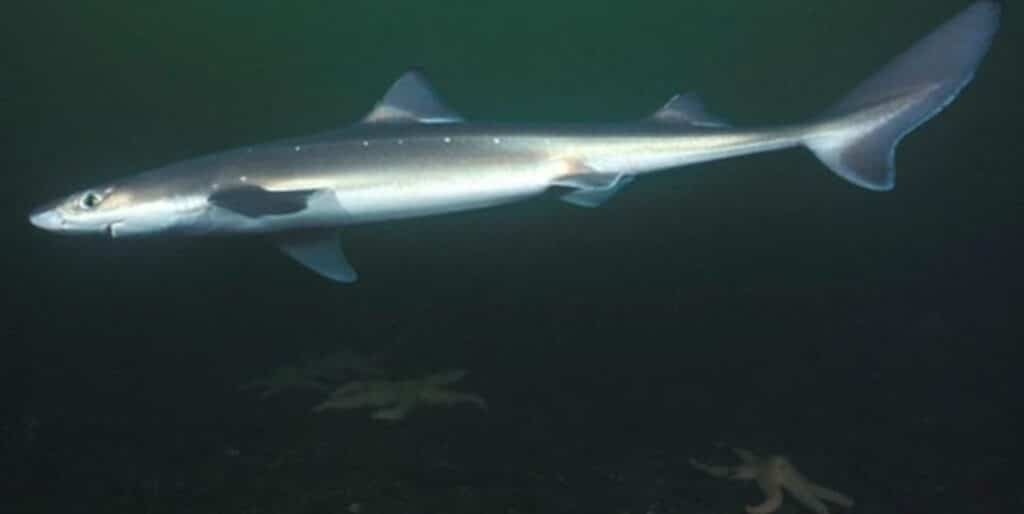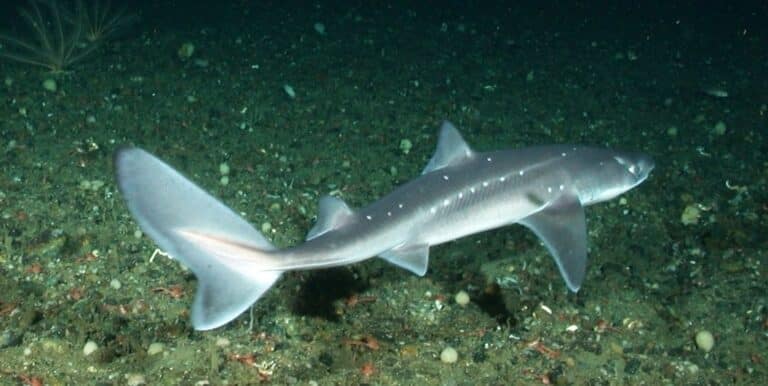What is a Spiny Dogfish?

A spiny dogfish or Squalus acanthias is a species of shark. These sharks were once believed to be the most abundant shark species in the world and they were heavily utilized by numerous human populations. This resulted in overfishing. In some regions, this shark went from being considered a widespread nuisance to being a species considered vulnerable to extinction, illustrating how quickly human activities can disrupt animal populations.
Spiny dogfish are usually a little over three feet (one meter) in length and can weigh about 20 pounds (nine kilograms). They are brown to gray in color with creamy bellies and white spots on their backs. This coloration acts as camouflage for the sharks, allowing them to hide from predators and prey alike. They lack an anal fin and have notably large eyes.
As the name implies, the spiny dogfish also sports a pair of spines. The spines are capable of emitting a mild toxin and they are used for self defense. When attacked, a shark can curl up on itself to present the spines, with the goal of jabbing a predator. These spines are not dangerous to humans, but they can be painful and most people try to avoid them.

One notable characteristic of the spiny dogfish is its roaming habits. While many fish species migrate to take advantage of seasonal changes, spiny dogfish have been known to cross vast distances. Tracking devices on these sharks have followed them across oceans. These sharks also school in very large groups. While they tend to stay close to the bottom of the ocean and prefer coastal waters, they can be found near the surface and in the open ocean, often in pursuit of prey.
Spiny dogfish have a reputation for being voracious. They eat a wide variety of prey species and are unafraid to attack fishing nets to grab prey. Some fishing communities have historically viewed these sharks as a problem because in addition to damaging nets, they also frighten away schools of commercially valuable fish like mackerel.
In some nations, people fish for spiny dogfish. They are sold for eating and they are also processed to yield products like fertilizer and fish oil. Conservation concerns in many regions led to calls for quotas and fishery monitoring to ensure that the populations did not dip to dangerously low levels. In some areas, spiny dogfish fisheries have recovered very well under supervision from government agencies and conservation groups.






